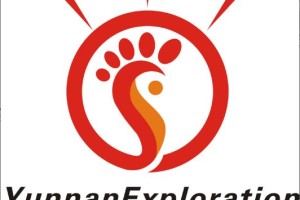
Tengzizhai Village of Puxiong Town in Jianshui County, Honghe Prefecture
Overview
Tengzizhai Village is a mountainous administrative village under Wanjiazhuang Administrative Village in Puxiong Township, Jianshui County, Honghe Hani and Yi Autonomous Prefecture, Yunnan Province. Located 9 kilometers east of Puxiong Township government, the village covers an area of 9.53 square kilometers at an altitude of 1,780 meters. With an average annual temperature of 13℃ and annual precipitation of 865 mm, it’s suitable for growing rice, corn, wheat and other crops. As of 2007 data, the village had 68 households with a rural population of 260 people12.
Ethnic Composition
While specific ethnic proportions in Tengzizhai aren’t documented, Puxiong Township’s overall population consists mainly of:
- Han Chinese: The majority group
- Hani (Akha): Significant minority with rich cultural traditions
- Yi: Another important minority group in the region45
Ethnic minorities in surrounding villages constitute a considerable portion of the population, with Hani and Yi cultures being particularly prominent in the area.
Historical Background
The Hani people in Puxiong Township have a long history in the region. According to Hani elders, their ancestors initially settled along the Longcha River in Puxiong, where they developed cultural practices like the manggu drum dance to protect themselves from wild animals in the dense forests8. The Yi people in the area have maintained traditions like the Yi lantern performance art since the Qing Dynasty (around 1736)11.
Culinary Culture
Hani Cuisine
While specific to Tengzizhai isn’t documented, regional Hani specialties likely include:
- Sticky Rice Dishes: Including purple sticky rice varieties with medicinal value
- Smoked Meat: Pork or beef preserved with local spices
- Baiwang: A unique dish made with fresh animal blood5556
Yi Cuisine
Local Yi culinary traditions feature:
- Tuo Tuo Meat: Large chunks of boiled pork/mutton with minimal seasoning
- Blood Sausage: Made with pig blood, glutinous rice and intestines
- Roasted Piglet: Festive dish for important occasions5859
The village’s main agricultural products include tobacco, rice, corn, and plans to develop winter pear industry1.
Traditional Attire
Hani Costumes
Hani clothing in the region typically features:
- Blue/black as base colors with red decorations
- Intricate silver ornaments representing celestial bodies
- Layered short jackets resembling terraced fields6465
Yi Costumes
Yi traditional dress often includes:
- Embroidered patterns with bright colors
- Distinctive headwear like the “thousand-layer tile” style
- Silver accessories as status symbols6768
Customs and Traditions
Hani Customs
- Manggu Drum Dance: A traditional male dance using drums as props, recognized as national intangible cultural heritage831
- Sacrificial Rituals: Including ceremonies to worship village gods and nature spirits
Yi Customs
- Torch Festival: Celebrated with bonfires and dancing
- Yi Lantern Performance: A unique art form blending Yi and Han cultures11
Architectural Style
As a traditional village, Tengzizhai preserves:
- Earth or red brick houses, some over 30 years old
- Courtyard-style layouts adapted to mountainous terrain
- Use of local materials in construction3843
The village maintains a peaceful, rustic atmosphere with traditional dwellings scattered around a small lake38.
Festivals and Celebrations
| Festival | Ethnic Group | Typical Time | Main Activities |
|---|---|---|---|
| Manggu Drum Festival | Hani | Varies | Drum dances, sacrificial rituals |
| Torch Festival | Yi | June 24 | Bonfires, dancing, bullfighting |
| Sacrifice to Dragon | Hani | Spring | Prayers for rain and good harvest |
| Yi Lantern Festival | Yi | Winter | Traditional performances811 |
The Hani “Sacrifice to Dragon” festival is particularly significant, involving ceremonies to worship the dragon tree and pray for favorable weather7677.
Handicrafts
While specific to Tengzizhai isn’t documented, regional traditional crafts include:
- Hani Silverwork: Intricate jewelry making techniques
- Yi Embroidery: Colorful needlework with symbolic patterns
- Bamboo Weaving: Practical items and decorative pieces2864
Religious Practices
Religious life in the area blends:
- Traditional animist beliefs and ancestor worship
- Elements of Daoism and Buddhism
- Some Christian influence in the region3133
The manggu drum dance itself carries religious significance as part of Hani village sacrificial activities31.
Language Use
The linguistic situation likely includes:
- Hani language: Spoken among older generations
- Yi language: Various dialects used within the community
- Mandarin Chinese: Primary language for interethnic communication
- Local Han dialect: Influenced by surrounding minority languages34
The government promotes Mandarin while preserving ethnic languages as part of cultural heritage.
Travel Tips
- Best visiting time: During traditional festivals like the Torch Festival or Sacrifice to Dragon
- Local specialties: Try regional Hani and Yi cuisines if available
- Cultural respect: Ask permission before photographing locals, especially during ceremonies
- Accessibility: Located in mountainous terrain, 9km from Puxiong Township center138
Tengzizhai Village offers visitors an opportunity to experience authentic Hani and Yi cultures in a well-preserved traditional village setting, with its peaceful environment and traditional architecture being particular highlights.

 7 Days GolfingTour
7 Days GolfingTour
 8 Days Group Tour
8 Days Group Tour
 8 Days Yunnan Tour
8 Days Yunnan Tour
 7 Days Shangri La Hiking
7 Days Shangri La Hiking
 11 Days Yunnan Tour
11 Days Yunnan Tour
 6 Days Yuanyang Terraces
6 Days Yuanyang Terraces
 11 Days Yunnan Tour
11 Days Yunnan Tour
 8 Days South Yunnan
8 Days South Yunnan
 7 Days Tea Tour
7 Days Tea Tour
 8 Days Muslim Tour
8 Days Muslim Tour
 12 Days Self-Driving
12 Days Self-Driving
 4 Days Haba Climbing
4 Days Haba Climbing
 Tiger Leaping Gorge
Tiger Leaping Gorge
 Stone Forest
Stone Forest
 Yunnan-Tibet
Yunnan-Tibet
 Hani Rice Terraces
Hani Rice Terraces
 Kunming
Kunming
 Lijiang
Lijiang
 Shangri-la
Shangri-la
 Dali
Dali
 XishuangBanna
XishuangBanna
 Honghe
Honghe
 Kunming
Kunming
 Lijiang
Lijiang
 Shangri-la
Shangri-la
 Yuanyang Rice Terraces
Yuanyang Rice Terraces
 Nujiang
Nujiang
 XishuangBanna
XishuangBanna
 Spring City Golf
Spring City Golf
 Snow Mountain Golf
Snow Mountain Golf
 Stone Mountain Golf
Stone Mountain Golf




